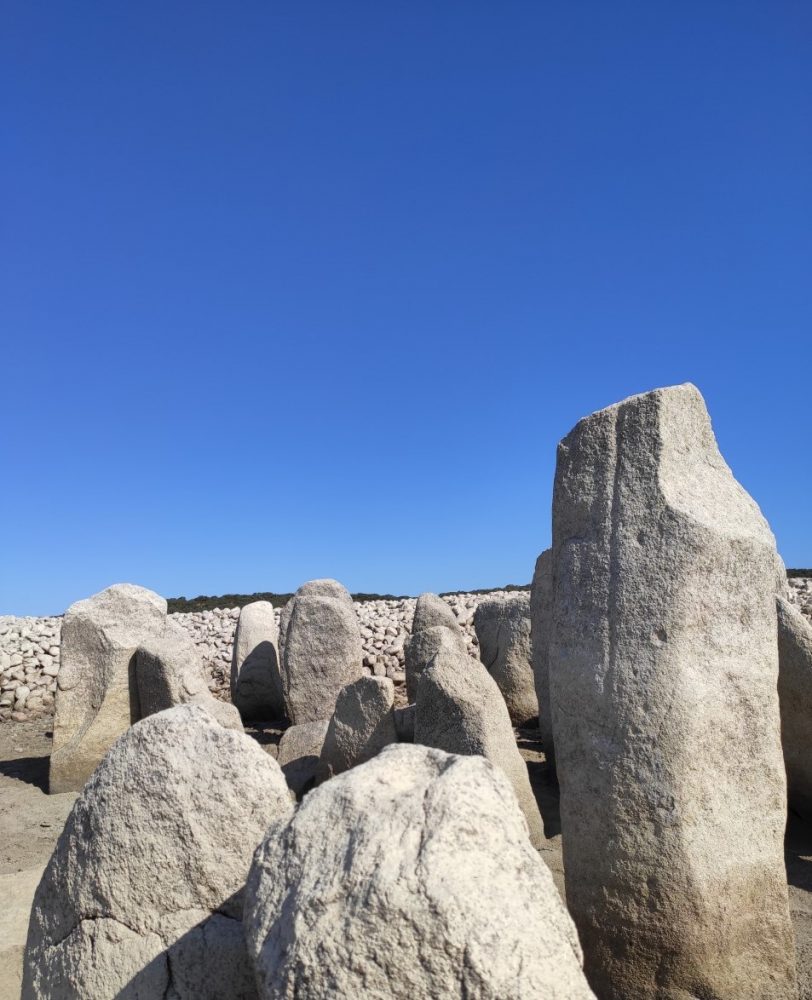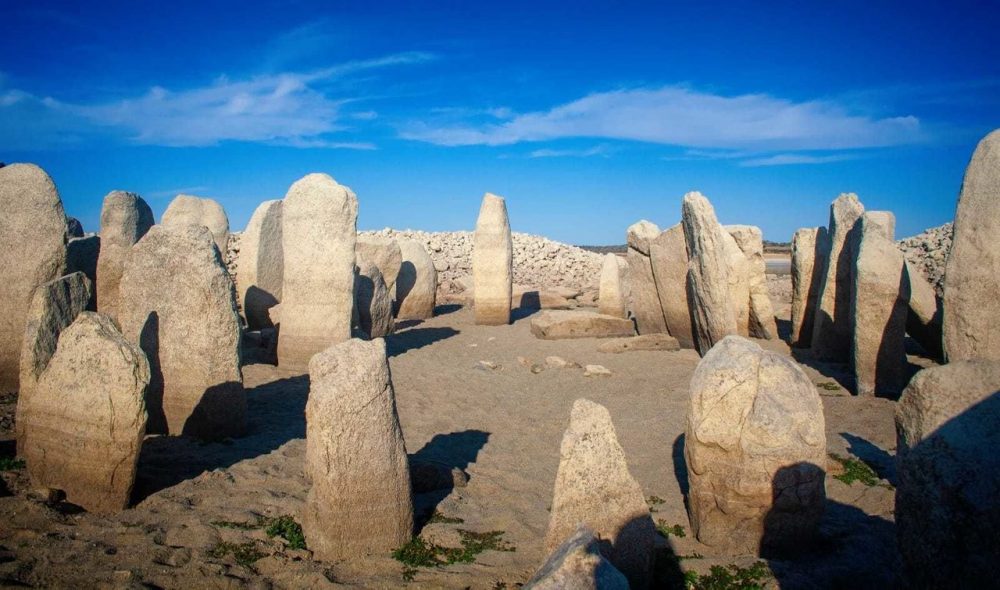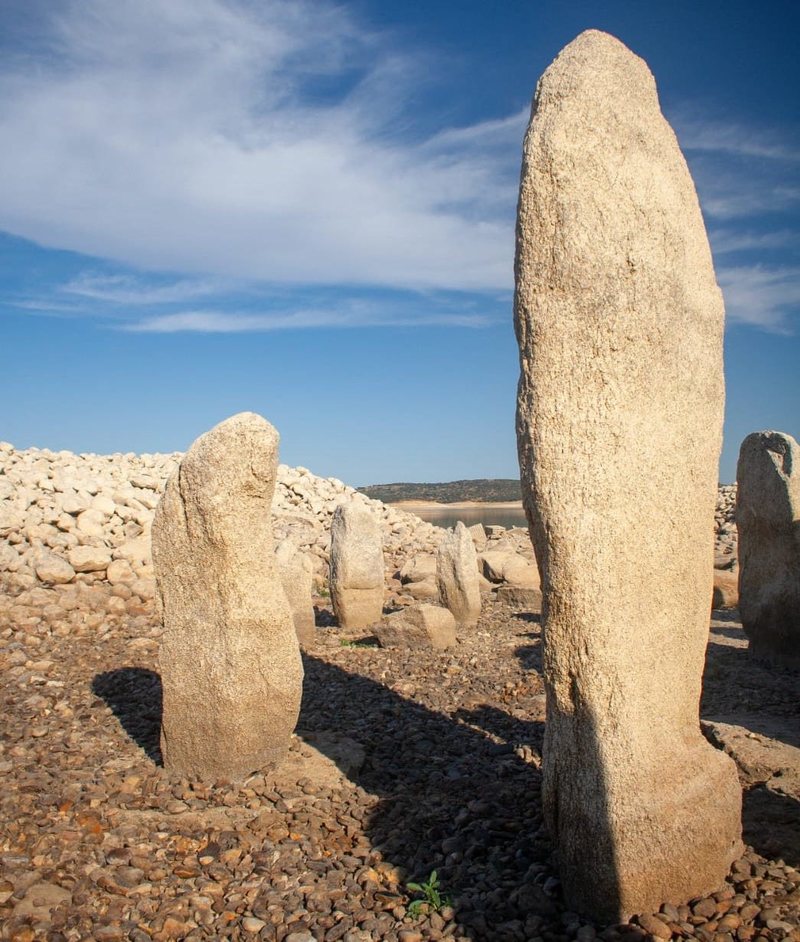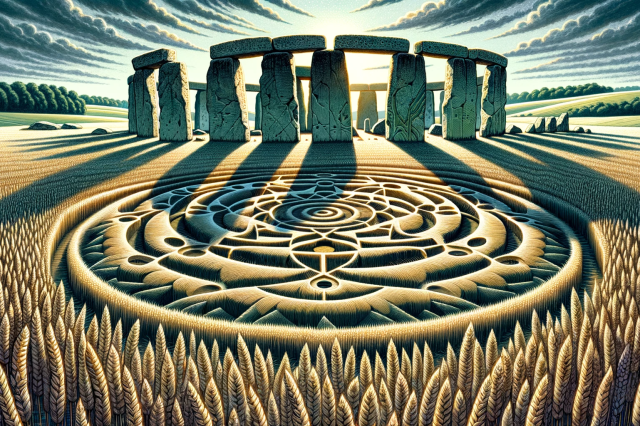The so-called Spanish Stonehenge, which is older than the Egyptian Pyramids, has recently been revealed to the world after decades of being submerged underwater. The Ancient site features more than 144 standing stones some of which were sculpted more than 5,000 years ago.
Hundreds of years before the first pyramids were built in Egypt and anywhere worldwide, mysterious people decided to organize and place megalithic stones intricately. The site in modern-day Spain, which remained covered by the sea, has now been revealed due to severe droughts.
A sunken temple?
The sunken temple in Spain is believed to date back around 5,000 years (although some scholars argue the stones date back more than 7,000 years), and it has been dubbed the Spanish Stonehenge due to its resemblance to its more popular counterpart in England; Stonehenge. The Spanish Stonehenge was built with 144 massive standing stones, considered a ritual temple in ancient times.
Although the site has been amply compared to the English Stonehenge, the Dolmens of Guadalperal could be 2,000 years older than Stonehenge and were most likely, at one point, an entirely enclosed space. When the site was built, people would most likely have entered it through a narrow hallway decorated with various engravings. The tunnel would lead into a bigger room, around 16 feet in diameter, where religious practices were performed.
Constructing such a site more than 5,000 years ago using massive stones would have required a great knowledge of engineering and construction skills.
The Spanish Stonehenge

The temple is home to massive stones, some two meters high. The stones feature intricate carvings of serpents on their surface. The massive stones were arranged in circles like Stonehenge, although no one knows which cultures placed them there or for what reason. The ancient site was submerged beneath the water in 1963 after the dam’s construction created a reservoir. The intricately arranged stones are believed to have first been spotted by the ancient Romans, who most likely looted the site.

The Spanish Stonehenge The standing stones weren’t rediscovered in modern times until a priest called Hugo Obermaier visited the site in the 1920s. It is believed that Obermaier cataloged the site and excavated artifacts which were then taken to Germany. The site is referred to as the Dolmens of Guadalperal. However, recent droughts have resurfaced the ancient henge. According to experts, extremely hot temperatures and increased water extraction have caused the ancient stones to reemerge from the reservoir depths.

Intricately arranged stones
Speaking about the intricately arranged stones, Angel Castaño, a member of Raíces de Peralêda—a group dedicated to the preservation of the site told Spain’s “The Local” newspaper: “We grew up hearing about the legend of the treasure hidden beneath the lake, and now we finally get to view them. There may have been treasures buried beneath the stones once upon a time. But for us now, the treasures are the stones themselves.” The temple won’t stay above the surface forever, and experts are now working to preserve the temple before the site submerges again.

Although not much is known about the intricately arranged stones or the people that created the site, experts argue the archeological site dates back to the third millennium BC. Scholars have proposed that the Spanish Stonehenge was used as a kind of sun temple on the banks of the Tagus River. The last time locals saw the temple above the surface was around six decades ago, forming part of local folklore and legends.
“The site would have been created over thousands of years, using granite transported from kilometers away. Like Stonehenge, they formed a sun temple and burial ground. They seemed to have a religious but economic purpose, being at one of the few points of the river where it was possible to cross. So it was a sort of trading hub,” Castaño revealed.

Spanish Stonehenge in danger
To prevent the stones from falling or being lost forever, locals have proposed taking and transporting the stones to dry land. Otherwise, once the water levels rise, the site may remain beneath the water for decades.
“We have had no rain this summer, so the drought and a policy of extracting the water to send to Portugal have combined to lower the water table and reveal the stones,” Angel explained. “But that can all change very quickly. If we miss this chance, it could be years before they are revealed again. And the stones, which are granite and therefore porous, are already showing signs of erosion and cracking, so if we don’t act now, it could be too late.”

However, transporting the stones to another site means destroying a part of the original complex. Although technically in the realm of possibility, if the stones were to be transported somewhere else, it would mean that experts would need to precisely document the position, depth, and angle of every stone on the site. The site where the dolmens are located is visible above water in these satellite images of NASA’s Landsat Program.
Lost “Spanish Stonehenge” revealed by drought: The Dolmen de Guadalperal has resurfaced after five decades underwater… via @NASAEarth #Landsat @USGSLandsat https://t.co/CWoYaWRbpR pic.twitter.com/jczOQG8dms
— NASA Landsat Program (@NASA_Landsat) September 19, 2019
The fact that the stones have remained submerged for a long time has damaged them irreparably. The water has eroded the stone and damaged some of the engravings that date back between 4,000 to 5,000 years. Luckily, when studies were carried out by Hugo Obermaier, the representations depicted on the stones were recorded, and reproductions of the engravings were published in 1960 by German archaeologists Georg and Vera Leisner.
Have something to add? Visit Curiosmos on Facebook. Join the discussion in our mobile Telegram group.




